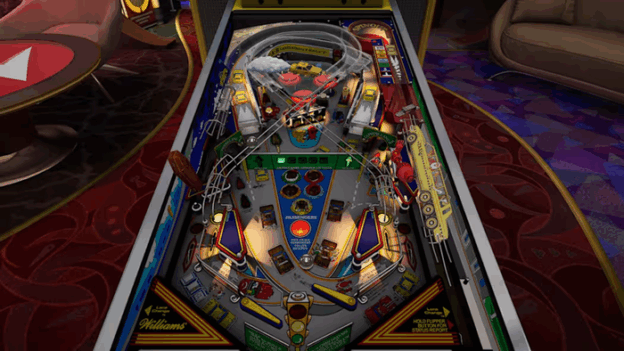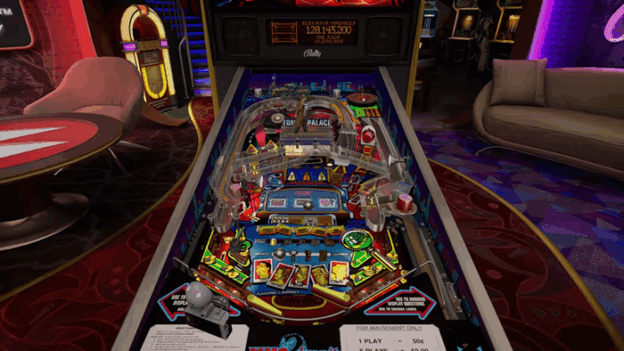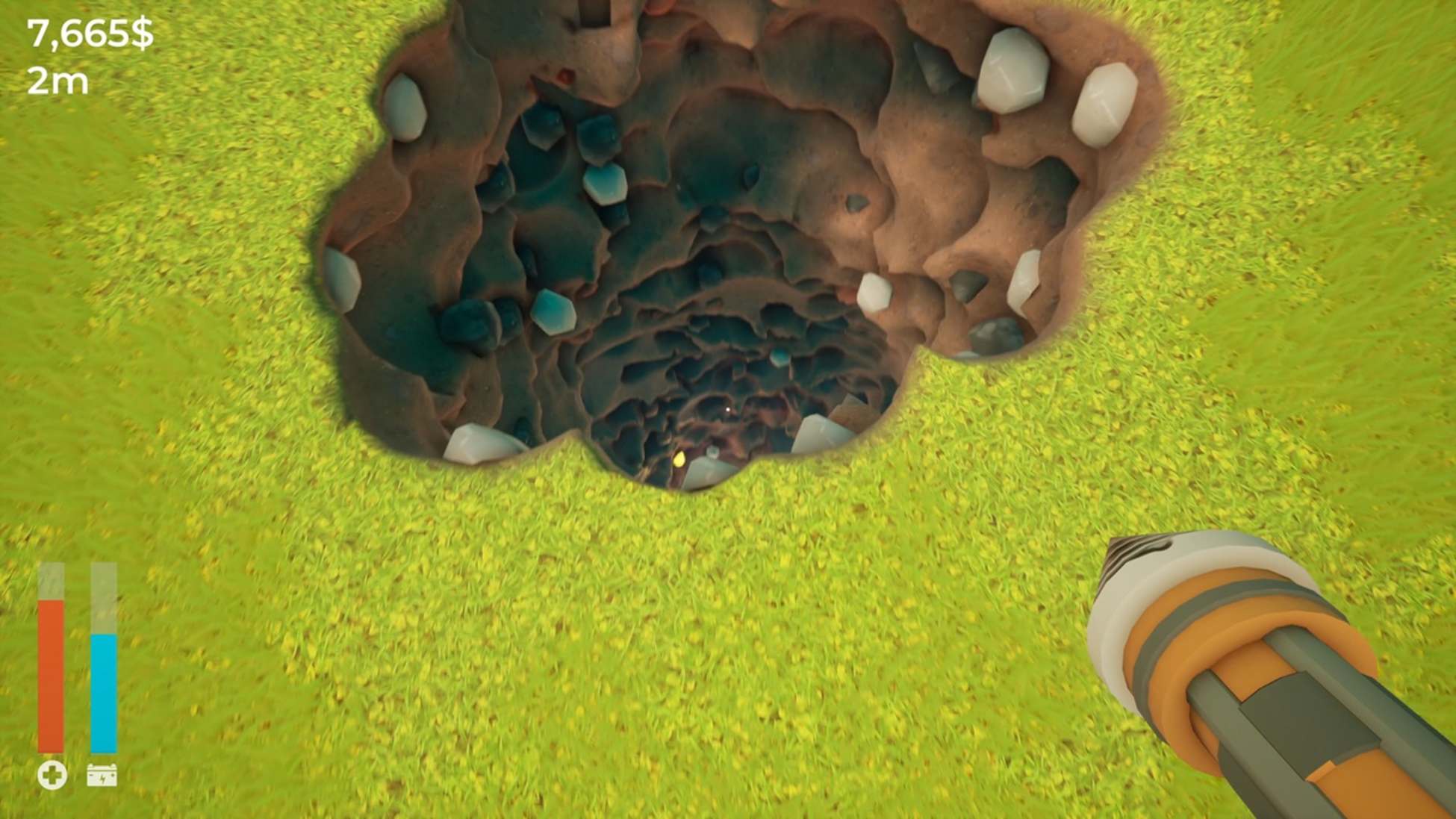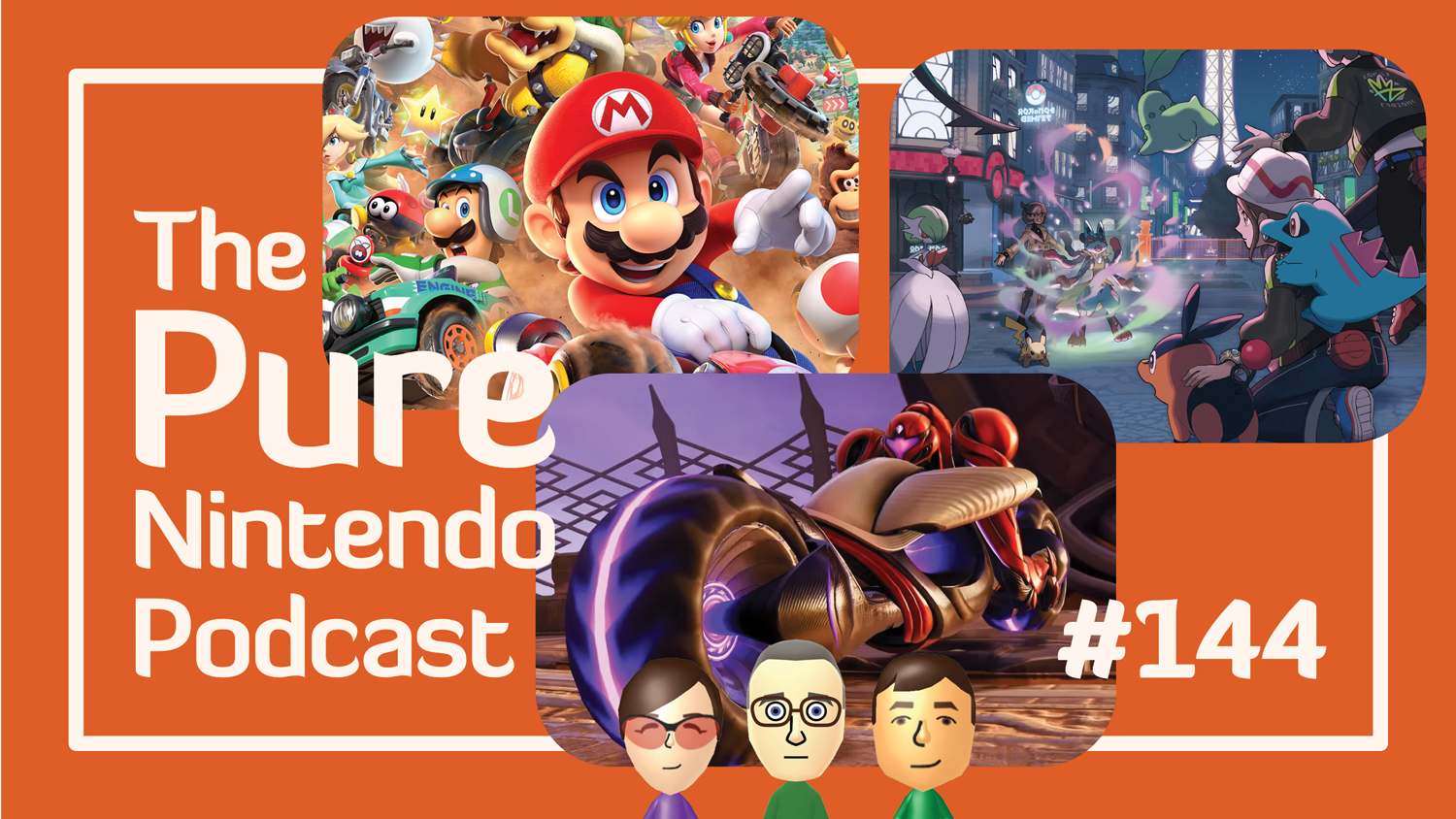Review: Pinball FX – Williams Pinball Volume 9 (Nintendo Switch)

In many ways, Pinball FX—Williams Pinball Volume 9 delivers just what pinball fans have come to expect. I’ve reviewed so many of these DLC packs that they are starting to blur together somewhat. Yet that fact also speaks to the addictiveness and enjoyment that the best of digital pinball can offer. I might have tried to pawn them off on Kirk had they been duds. How does this latest trio of machine conversions fare?
Well, it’s a nice step up from Williams Pinball Volume 8, the first DLC for Pinball FX. No, that’s not a typo, as Volume 7 didn’t arrive until months later; hey, I told you the transition from FX3 to just plain FX was rough. But I digress, let’s get into some specifics.
I’ll start with Pin-Bot, as it was the one I was most excited for. I’ve been fortunate enough to play an actual 1986 machine. Naturally, video pinball can’t surpass the original, though I’ve gladly played Pin-Bot in other digital versions and collections, and always find it interesting to feel and see the subtle conversion differences between them. Heck, I even have a version for the 8-bit NES from 1990, Rare developed, Nintendo published, that’s in a class all its own.
The nostalgic Pin-Bot reminds me of simpler times, when speech in a pinball machine still seemed huge, and Pluto was still a planet. Yes, in this game, you start at the one and only disgraced former planet, working your way across the solar system. You might think my scores would reflect my familiarity, but let’s just say rust is a real thing (perhaps I no longer have “such a supple wrist”). Still, I’m always up for replaying “The ultimate machine”, and it looks especially bright and colorful when playing it on the Nintendo Switch 2. More on that in a bit.
Next is Taxi, designed by Mark Ritchie. He’s worked on several of my favorites, including Indiana Jones: The Pinball Adventure. Taxi is one of his earlier designs, and I don’t enjoy it quite as much as many others do (unlike Pin-Bot, I have no nostalgia here). Still, it reminds me of simpler times — when Mikhail Gorbachev was a household name (yes, I know I’m recycling a joke). Seriously, what this game lacks in high score chasing for me, it makes up for in sheer bizarreness. Picking up the former leader of the Soviet Union (remember when that was still a country) is odd enough. Add Dracula, Santa, and others as possible passengers, and you have a weirdness extending beyond the late 80s release time. There’s even some Pin-Bot love here. Though I’ve got to admit, hearing “Taxi” yelled continually will eventually grate on you. Not all speech is an asset.
I hate to shortchange Taxi, but I want to maximize my limited word count to talk about the machine that surprisingly generated the most play from me in this volume, Who Dunnit. Some of that stems from my lack of experience with this table. Unlike the prior two in this volume, I don’t recall it from any compilations in my collection. Nor have I ever played the machine in real life. At less than 2,500 units sold, it was not a strong performer in 1995.
But Who Dunnit is cool, and it even features a lot of taxis, so there’s a thematic connection with this volume’s predecessor. Even though it’s a mid-’90s machine, the atmosphere is nearly 60 years prior. The noir murder mystery theme makes me think I’m playing Parker Brothers Clue in pinball form, reminding me of simpler times when I could recycle the same joke and still get a chuckle. Besides the cool theme, this table wants you to succeed and get into a rhythm and groove. It has strong sound effects and music (the Peter Gunn theme I associate with NES Spy Hunter). The aforementioned taxis can lead you to a multiball for fun and lengthy play!
A unique feature of Who Dunnit is that you can select novice or expert at the start. The former guarantees two minutes of play time with unlimited balls, and is a nice option for those wanting to learn the table. Having such a setting accessible to the player and not restricted to operator settings is a neat choice, and well worth a mention.
Like I did with Zen Studios Tomb Raider Pinball, I played this volume on both my original Switch and the Switch 2. At least when playing in handheld mode, I recommend the Switch 2 if possible. The higher resolution makes blurriness a non-factor. Depending on which table views you prefer (or your desire to navigate table guides), it’s especially noticeable. Background details and any writing have welcome clarity. I simply prefer the brighter, larger display. Even spongy flippers seem to be MIA.
You’ll surely enjoy Pinball FX – Williams Pinball Volume 9, though some may want to wait for a sale that matches the FX3 volume pricing. In either case, those with “crazy flipper fingers” can expect a good time.






